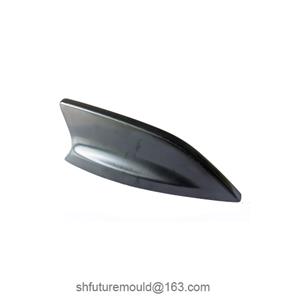Application of Glass Fiber Reinforced Injection Molding in Automotive Component Manufacturing
As the automotive industry increasingly emphasizes lightweight, strength, and durability, glass fiber-reinforced plastics (GFRP) play an ever-expanding role in automotive component manufacturing. GFRP injection molding, with its outstanding mechanical properties, heat resistance, and processability, is becoming a crucial technology for replacing traditional metal materials.
Characteristics of Glass Fiber-Reinforced Materials
Glass fiber-reinforced materials are composites made by combining glass fibers with a plastic matrix, exhibiting the following features:
High Strength: Significantly enhances tensile and flexural strength.
Low Density: Lighter than traditional metal materials, aiding in automotive lightweighting.
Excellent Dimensional Stability: Minimizes deformation of parts in high-temperature and high-humidity environments.
Outstanding Chemical Resistance: Resistant to corrosion and chemical attacks, suitable for complex operating conditions.
Typical Applications in Automotive Components
The glass-fiber-reinforced injection molding process is widely used in the following automotive components:
1. Engine Covers
Provides high heat resistance and dimensional stability.
Reduces overall weight, thereby lowering fuel consumption.
2. Bumpers and Grilles
Enhances impact resistance, improving safety.
Facilitates the realization of complex designs, meeting aesthetic requirements.
3. Dashboards and Interior Panels
Delivers excellent appearance and tactile quality.
Reduces vibrations and noise, improving passenger comfort.
4. Door Structures and Seat Frames
Lowers part weight, increasing energy efficiency.
Strengthens structural rigidity, enhancing safety.
Advantages of Glass Fiber-Reinforced Injection Molding
High Production Efficiency: Injection molding is highly automated and suitable for mass production.
High Design Flexibility: Capable of creating components with complex geometric shapes.
Cost Reduction: Material and processing costs are significantly lower than metal fabrication.
Conclusion
The glass-fiber-reinforced injection molding process demonstrates enormous potential in automotive component manufacturing. It not only meets the demands for lightweight and high performance but also offers greater possibilities in automotive design and production. In the future, as process technologies continue to improve, the application of glass fiber-reinforced materials in the automotive industry will deepen further, contributing to the sustainable development of the automotive sector.
- Injection Mold
- Automotive Injection Mold
- Electronics & Electrical Injection Mold
- Consumer Goods Injection Mold
- Airplane Components Injection Mold
- Medical Components Injection Mold
- Irrigation Components Injection Mold
- Injection Molds




